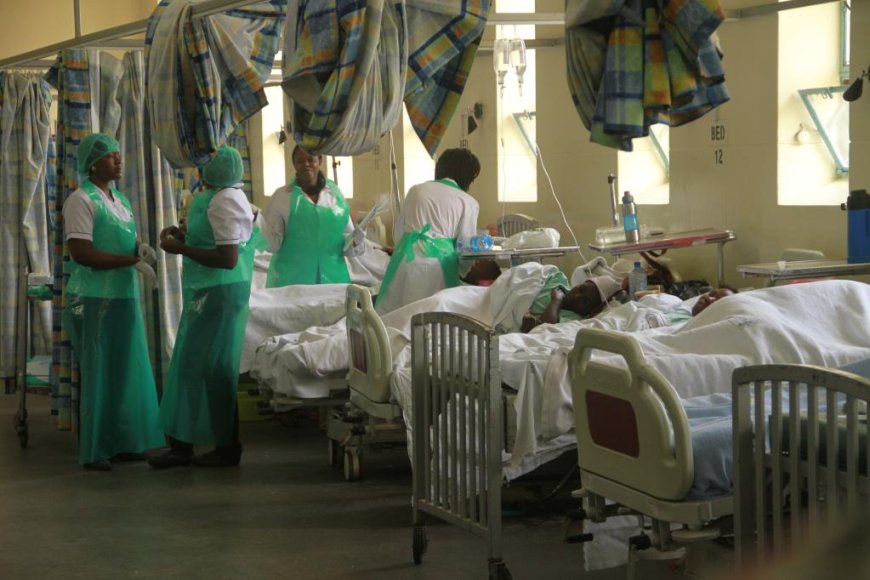Govt Gives Deadline To Hospitals Near Homes, Petrol Stations
Per KMPDC, healthcare facilities play a crucial role in safeguarding public health, and their location is key to effective service delivery.

The Kenya Medical Practitioners and Dentists Council (KMPDC) has issued a directive requiring health facilities operating in restricted areas to relocate within six months.
According to a statement from KMPDC and sent to Viral Tea, the measure aims to ensure the safety of patients, healthcare providers, and the general public by mitigating risks associated with unsuitable locations such as petrol stations and residential buildings.
Per KMPDC, healthcare facilities play a crucial role in safeguarding public health, and their location is key to effective service delivery. The restriction on healthcare operations in specific areas is thus driven by concerns such as infection control, patient safety risks, infrastructure challenges, air and noise pollution and disturbances that may compromise patient care.
"Medical facilities require controlled environments to prevent the spread of infections. Establishing clinics or hospitals in high-traffic or poorly designed or ventilated spaces increases the risk of contamination, endangering both patients and healthcare workers as well as visitors to the adjacent services," read the statement in part.

Kenya Medical Practitioners and Dentists Council CEO David Kariuki. /KMPDC
"Petrol stations, in particular, pose significant hazards due to the additional presence of highly flammable materials. The potential for fire outbreaks or chemical exposure makes such environments unsuitable for medical facilities, which often store oxygen tanks and other sensitive equipment."
KMPDC further revealed that health facilities located in residential buildings present challenges related to limited space, inadequate ventilation, and restricted access to essential infrastructure such as sewage systems and emergency response mechanisms.
Further, residential areas are primarily designed for housing and may not support the demands of medical service provision, which requires specialized structures to maintain hygiene and safety standards. The disturbances from increased foot traffic, noise, and patient movement in residential areas can also negatively impact both residents and healthcare service delivery.
The exposure to pathogens from the patients thus increases the risk of infections in the general population residing in the residential buildings. Additionally, emergency evacuation is affected where patients and residents use the same exit and emergency pathways. However, clinics/hospitals are allowed to operate in commercial centres/buildings within residential.
KMPDC has given affected facilities a six-month period to relocate to appropriate locations that meet healthcare safety and operational standards, emphasizing that adherence to the directive is mandatory and non-negotiable.
"Health facilities should identify and transition to premises that meet regulatory standards, including adequate space, sanitation, and security measures. Before relocating, medical service providers must ensure that their new premises are inspected and approved by relevant authorities. Facilities must also develop a structured plan to inform patients and ensure continuity of care during the relocation process," added the directive.
KMPDC warned that failure to comply with this directive will result in stringent enforcement actions, including closure of non-compliant facilities, further stating that healthcare service providers must prioritize patient welfare and public safety over convenience or cost considerations.
Speaking on the directive, KMPDC CEO Dr. David Kariuki reiterated the council’s commitment to upholding healthcare standards, stating, "Our primary responsibility is to ensure that healthcare facilities operate in environments that guarantee patient safety, infection control, and service quality. We urge all affected facilities to comply within the given timeframe to avoid regulatory action."
In line with the council’s regulations, the location of health facilities must ensure easy accessibility to roads, sewerage lines, and other basic services. Where practicable, a health facility should not be located close to cemeteries, sewage treatment plants, mining areas, or industries that produce emissions.
Additionally, new health facilities must obtain necessary environmental approvals from relevant bodies. The siting of health facilities should consider appropriate topography and demographic realities to ensure accessibility and service effectiveness.
A health facility must also display a visible name board to the public, indicating the name of the facility, its contact details, and the GPS coordinates from the Kenya Master Health Facility List (KMHFL), along with the distance. These requirements aim to standardize healthcare facility locations, improve access, and enhance public confidence in healthcare services.
The KMPDC’s directive is a significant step toward improving healthcare standards in Kenya. By ensuring that medical facilities operate in safe and conducive environments, the council aims to enhance service delivery while minimizing risks associated with unsuitable locations.
Healthcare providers were urged to act promptly to comply with these requirements and safeguard the well-being of their patients and the broader community.







